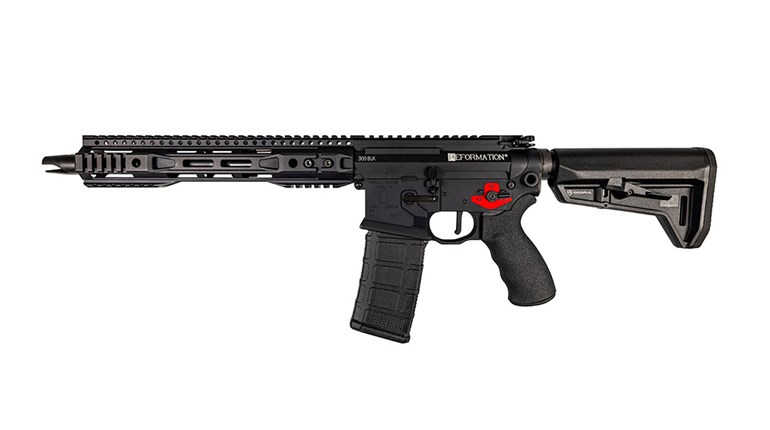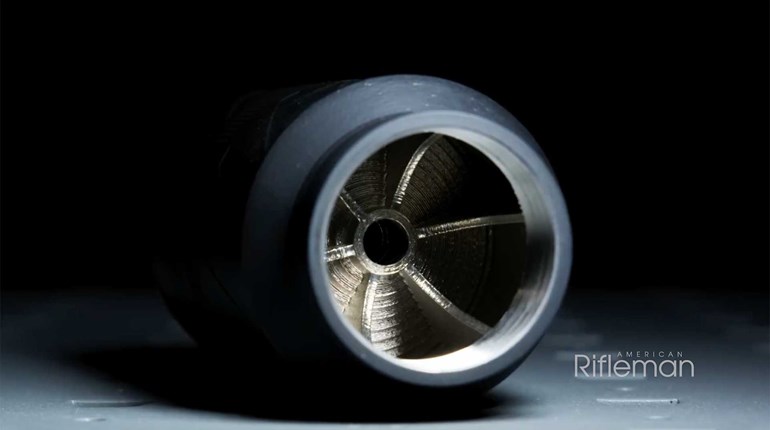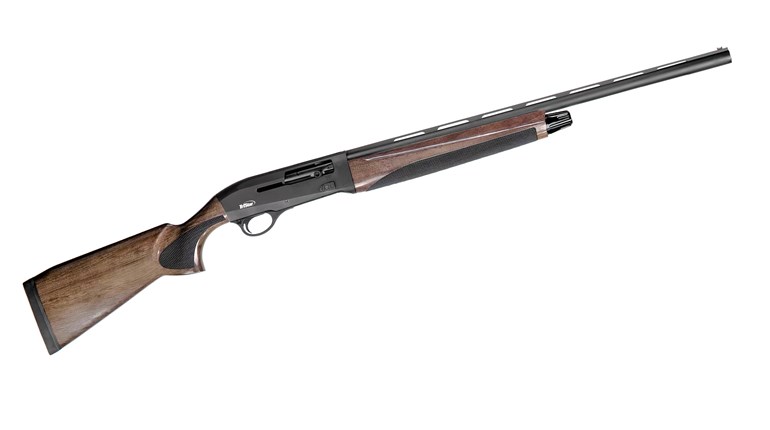
CZ’s Bren 2 Ms carbine released earlier this year is a much evolved version of the 805 Bren. That rifle was closely based on the selective-fire 805 Bren that debuted in 2015, designed to meet the requirements of the Czech military. Well made, rugged and reliable, the 805 Bren carbine was burdened by ergonomic and functional quirks, excess weight, mediocre accuracy, an outdated rail-type fore-end and a bolt carrier that could not be field stripped completely.
The Bren 2, in contrast, was designed with significant input from CZ’s U.S.-based importer, and except for the rifle’s accuracy, corrects each of these shortcomings resulting in a serious contender for one’s home-defense battery and close-quarter engagements.
CZ-USA sells several pistol variants of the Bren 2 in 7.62x39 mm and 5.56 NATO, but the carbine tested here is only offered in 5.56. The Bren 2 carbine uses a short-stroke, gas-piston system with a seven-lug, rotating bolt that resembles that of the AR-15, and it feeds from AR-15-style magazines. Dimensionally, it measures 35.6 inches with the stock open, 28 inches with it folded and at 7.3 pounds, weighs 1 pound, 2 ounces less than the 805 Bren.
The serial-numbered upper receiver is made from an anodized aluminum 7075 billet and joins with a carbon-fiber/polymer lower containing the fire-control parts and magazine well. The cold-hammer-forged barrel is .689-inch in diameter (slightly less than the .72-inch diameter of my Bushmaster AR-15 HBAR), has a 1:7-inch twist and is topped with a two-chamber compensator. Steel parts are nitride finished.
The Bren 2’s 11.5-inch aluminum fore-end has M-Lok slots on three sides and a Picatinny rail on top. It is user-changeable by removing four Torx-head screws. The carbon-fiber/polymer buttstock folds to the right and has four settings, offering a length-of-pull between 12 and 14.88 inches. When folded, the buttstock secures itself against the plastic brass deflector behind the ejection port. The Bren 2 operates with the stock folded, but removing it renders the rifle non-functional because the stock secures the rear of the lower receiver to the upper.

The gas regulator has three settings: normal, adverse conditions (for use only if cycling is sluggish from firing underpowered ammo or with a dirty action) and closed for manual cycling.
Controls on the Bren 2 are considerably improved over its predecessor’s, which were generally awkward to use. The charging handle is non-reciprocating, reversible and can be used as a forward assist to remedy an out-of-battery stoppage. Bilateral safety levers have a 45-degree throw and can be engaged with the gun cocked or not—a definite improvement over the AR-15.
The action locks open after the last round is fired, but the bolt can also be locked rearward or released using an AR-15-style paddle lever or a two-position, ambidextrous switch inside the trigger guard. The magazine can be released using a large, right-side button or a left-side lever easily accessible to the trigger finger.
Adequate crinkle texturing on the pistol grip provides solid purchase, and the grip contains a hinged compartment to stow spare batteries. Its backstrap can be replaced by drifting out a 1/8-inch pin if you wish to adjust your trigger reach. Sling mounts are aplenty, with two non-rotational QD sling sockets and a two-slot sling plate at the rear of the upper receiver that fits a 1-inch-wide sling or to attach sling clips. There are also two QD sockets located at the rear of the buttstock.

The Bren 2 cycled without any stoppages in slightly more than400 rounds of various loads from numerous manufacturers. To assess accuracy, I mounted a Leupold Mark IV 8.5-25x50 mm scope and fired at 100 yards with the rifle in a Caldwell Precision Turret Rest. Like the 805 Bren I tested prior, the Bren 2 shot 55-grain FMJ practice loads slightly better or practically equal to match-grade ammo loaded with heavier bullets despite its relatively fast 1:7-inch twist rate. The factory three-shot test target using 55-grain Sellier & Bellot ammo—which CZ-USA believes was shot from a machine rest—seems to validate my average five-shot group of 2.75 inches using Federal AE223.
As for this rifle’s handling, the ergonomic improvements over the 805 Bren are evident in all respects. The rifle is not muzzle heavy, the safety readily activates with the thumb or index finger and the other controls are accessible and easily engaged by right- and left-handed shooters even when wearing lightweight gloves. The trigger has a pull weight of a comparatively light 3 pounds, 6 ounces and had a fair amount of take-up and overtravel. The wide trigger face, however, makes the trigger’s resistance feel even less. Accordingly, prepping the trigger by removing the slack, then holding before the break is a technique that requires practice to become proficient at speed.

One ergonomic area to improve is the stock’s comb height that could be higher or adjustable to make mounting the rifle quicker and more repeatable when using traditional riflescopes or optical sights. Overall, though, the Bren 2’s upgrades make for a much-improved carbine.





































